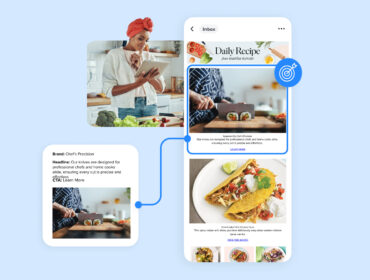Why Top Publishers Are Expanding into New Lines of Revenue
Publishers are going through an identity crisis.
In just the past few years, they’ve been told to think like digital advertisers, marketing agencies, software startups, fashion brands, entertainment companies, gyms (yup), and, of course, Amazon.
It’s like the world is screaming: “Think like anything but publishers, please, we beg you!” Why? Because publishers are grasping for answers – any way to make up the revenue they’ve lost from decades of counting on print distribution.
According to eMarketer, the most important digital revenue streams for publishers in 2019 was display advertising (81%), subscriptions (78%), native advertising (75%), events (48%), and ecommerce (31%).

Still, even digital solutions once thought reliable have proven to be fair-weather friends, like Facebook video and organic social reach.
That’s why LiveIntent sat down with executives from The New York Times, The Daily Beast, Vox Media, and Ziff Davis. We picked their brains to understand just why they’re expanding into new lines of revenue – and which solutions they’ve found to be successful.
Here’s what they had to say.

Reason: Loss of advertising revenue
When Mia Lehmkuhl Libby assumed her role as chief revenue officer of The Daily Beast, her first task was stemming the tide of ad revenue loss.
She looked to her audience.
“The idea was to figure out what our audience really wanted from us and how we could give them more,” says Libby. “Are there ways to charge for that? Are there ways to create advertising products that advertisers want to be a part of in bringing to our audience? The rubric was always, ‘How can we be in service of our consumer and bring them a better experience?”
Solution: Subscriptions
The Daily Beast launched “Beast Inside,” a paid subscription service, targeted towards loyal readers who visit 50x per month. Subscribers receive access to exclusive content like customized email newsletters and analysis of the 2020 Presidential Election.

Reason: Find new ways to tell stories
As a legacy print business, The New York Times has been under great pressure to modernize and monetize in the digital age. Still, SVP of ad innovation Allison Murphy says they have a commitment to journalism at heart.
“We recognized that some of the stories we’re telling – and our journalists are finding, –have more ambitious ways to be told, whether that’s through audio, video, or other formats,” says Murphy. “Then we started to think how to monetize these new formats in ways that audiences want to engage with us.”
Solution: Branded content
The New York Times launched T Brand Studio, a brand-marketing unit that works with advertising partners to craft long-form stories, investigative articles, and interactive videos that push the bounds of modern storytelling. To promote its documentary 13th, Netflix’s sponsored “Plantation to Prison,” an article about involuntary servitude in the U.S. prison system. And Delta sponsored “Welcome to the Airport of the Future!” providing an immersive look at the technology that will change air travel.

Reason: Reaching audiences across platforms
As Vox Media audiences started spreading across different platforms, VP of revenue Courtney Glaze began to explore new revenue streams that could be part of their experience.
Solution: Podcasting
Vox Media tested a couple of podcasts and saw great success with the format. So they doubled down on it — or rather increased their output by over 87x. Popular podcasts include The Ezra Klein Show, which tackles big ideas and research in current events, and Today, Explained, a daily explainer series.”We now have 175 podcasts across our seven different networks because our audience loves them,” says Glaze. “The audience engagement was there; monetization follows.”
—



